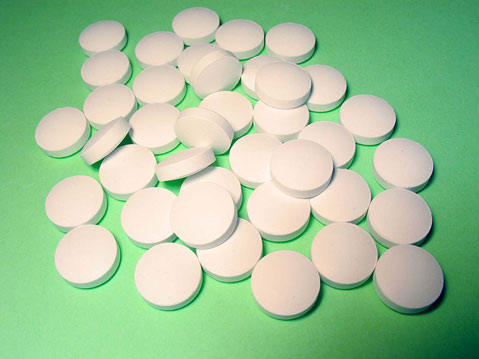All Marked Up
Do Cottage Hospital's Charges Make Sense?

My 24-year-old son was a patient at Santa Barbara Cottage Hospital last winter and received great care. He had complications from a dental infection and after emergency-room visits recommended by his dentist, a tooth was pulled and my son was admitted to the hospital for two nights for intravenous antibiotics. Thankfully, the staff and the medicine got things under control and my son was fine. It’s the bill, now, that’s the problem.
I was surprised to learn from a collection agency statement that Santa Barbara Cottage Hospital marks up the cost of common antibiotics by almost 3,000 percent, and also that they defend the charges. This is an issue for us because the main reason my son was in the hospital was for antibiotics, and because the Blue Shield of California policy we buy requires he pay 30 percent of approved costs after deductible.
Consumers can find the cost of many drugs on Johns Hopkins ABX Guide, and I found that one unit of Ampicillin/Sulbactam, for example, cost the hospital $10, but they charged my son $378; eight units cost the hospital $80, but they charged $3,024 for it. Or a one-gram Vancomycin injection costs the hospital $9.75 per unit, and they charged my son $387. Five shots cost the hospital $48.75, but they charged my son $1,935. Same with Moxifloxacin IV, 400 mg: It costs the hospital $43.75, but they charge the patient $557. All together, the total hospital cost for medication for my son’s entire stay (according to the ABX guide) was $187.54, and the total Santa Barbara Cottage Hospital charged my son was $5,625. These are all very common antibiotics, and the markup was 2,999 percent.
Santa Barbara Cottage Hospital defended their rates in letters to me, saying their “charges are based on the cost of delivering high-quality healthcare and are comparable with charges generated in similar facilities offering like services in our geographic area.”
First of all, Santa Barbara Cottage Hospital has a virtual monopoly in the area; and second of all, according to a 2004 report by the Institute for Health and Socio-Economic Policy commissioned by the California Nurses Association (CNA), the average national markup on drugs is 399 percent. That puts things in perspective a bit, even if the study is five years old and Santa Barbara is decidedly above the national average.
I was stunned to learn that California hospitals are free to set whatever charges they want for their services, medicines, and supplies. I’d heard justifications such as: High hospital charges are necessary to offset the hospital costs of those without insurance and function as a type of “hidden tax” the rest of us must bear, or the costs are all just numbers on paper. The figures don’t mean anything and insurance knocks off a bunch and “adjusts” it on your bill.
But the CNA research mentioned earlier states the obvious: “Hospitals that charge the most tend to make the most profits or net income.” And in November 2009, Fitch Financial Rating reported it had affirmed Cottage Hospital’s high ratings and that they reflect “Cottage’s exceptionally solid profitability buoyed by strong balance sheet metrics, outstanding cash flow, [and] dominant market position in Santa Barbara County : In fiscal 2008, Cottage continued its history of robust operating performance : As such, Cottage has been one of the strongest performers among Fitch’s health-care portfolio : This solid operating profitability and strong cash flow generation has allowed Cottage to fund its sizable capital plan while preserving liquidity.”
While the CNA study found “the hospitals ranked in the top 10 percent of markups on charges reported an average of $14.8 million in profits,” Cottage Hospital stated its “excess” (i.e., profit) was $52.7 million on its IRS Form 990 (the Return of Organization Exempt from Income Tax) for 2007.
In other words, it doesn’t seem like the hospital’s 3,000-percent markup on antibiotics was because the last person in the emergency room didn’t have health insurance.
The California Nurses Association report sums it up: “New research on pricing practices of over 4,000 hospitals across the U.S. documents that huge markups in charges to patients, especially for prescription drugs, medical supplies, and surgeries, are a major factor in exacerbating the nation’s health-care crisis and the pricing scandal that has prompted hearings, lawsuits, and a growing public outcry : It underscores that high prices are directly linked to industry profits and the increased ‘corporatization’ of the health-care industry.”
And now it’s happened to us. I realize my son’s experience is trivial compared to the tragedies we’re reading about day after day, but it’s a small and simple window into the current outrageous and dysfunctional health-care system that bulldozes the financial health of the patients it serves. The question now is: How will new health-care legislation prevent this from happening in the future?



